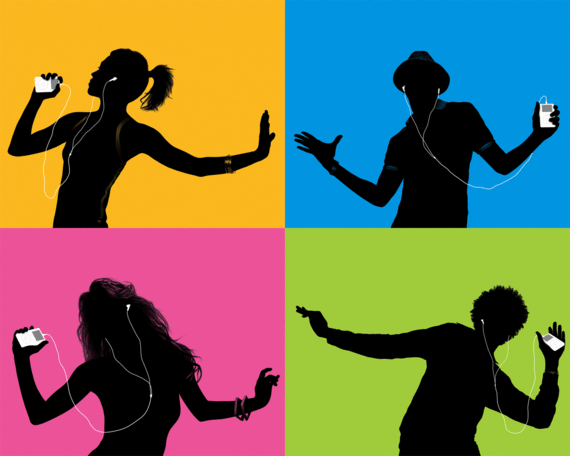A music therapy interview with Claudia Nicastro
Research shows that music affects our creativity and productivity. A series of experiments has investigated the relationship between the playing of background music during the performance of repetitive work and the efficiency in such a task. The results show that there is a positive economic benefit for the music industry. Conversely, absorbing and remembering information is best done with the music off, suggests a 2010 study published in Applied Cognitive Psychology.
Another interesting research at Stanford university, in California, has recently revealed a molecular basis for the Mozart Effect, but not other music. Dr. Rauscher and her colleague H. Li, a geneticist, have discovered that rats, like humans, perform better on learning and memory tests after listening to a specific Mozart sonata. The Mozart effect suggests that listening to certain kind of music -- Amadeus Wolfgang's classical works in particular -- impacts and boosts one's spatial-temporal reasoning, or the ability to think long-term, more abstract solutions to logical problems that arise.
Talking about Mozart, or other great classical composers, like Antonio Vivaldi, Giuseppe Verdi, Béla Bartók, Joseph Haydn, George Gershwin, Carl Orff and Franz Schubert among others, there are kids that are training with these composers on a daily basis. Claudia told me the other day.
Claudia is a music therapist who works with children with disabilities. She guides them in the knowledge of musical instruments ( violin, cello, drums, piano, small percussions, harp, marimba, contrabass) , by teaching them to play together in an orchestra, creating a perfect harmony of sounds and putting together a marvelous sequence of chords. Claudia follows children for three years and monitors their path and progress in music through this period. The health benefits associated with playing music are palpable: firstly, children develop a higher ability to express themselves and their inner emotions. Through music then, which is a non-verbal communication tool, children also develop their ability to interact and socialize with the other members of the orchestra, which puts them in a socialization space where their listening, concentration, precision, determination, creativity, empathy, patience and attention level skills increase due to their full participation and contribution to a "bigger picture" framework (the orchestra) where they will be playing together. The final outcome is to learn about common rules in order to reach a final result, where every single member of the group contributes to the success of the entire orchestra.
The emotional intelligence of the children evolve and enable them to live together. Overcoming differences and barriers, listening to others and being empathic to who surrounds us makes us greater human beings.
Curious about this learning methodology, I asked Claudia what her greatest achievement was when she looked at "her" children. "Resonance, that is -- the ability to get in touch with the outside world- is key in children' development" -- she continued. Self knowledge is the first path to their health improvements. Through music, they start a journey of both self discovery and discovery of other people, along with a discovery of music. They learn to control their emotions and , as in musical terms, they "modulate" ( in music modulation is the act of changing from one scenario to another one) them according to the orchestra needs. In this way they fully listen to both themselves and other people' needs as they learn to enter their "musical world" (when they "get in touch" with people and their inner music).
The line between music and mind is very subtle here. I imagined us like giant worlds with headphones on. Our headphones are of different colors, shapes and form though and, of course, they are playing different songs. The amaziness comes here: when we "get in touch" with another person (another world) , we do not stop listening to our songs in the headphones, but instead we can choose to share songs with others. A new paradigm of exchange, sharing, mixing and listening takes place. New songs are created. New relations are established. New emotions are felt.
Do you remember the iPod people dancing commercial? Think different ( as Steve Jobs encouraged us) Think that they all decide, this time in synchrony, to dance, listen and sing a new playlist of shared songs.

